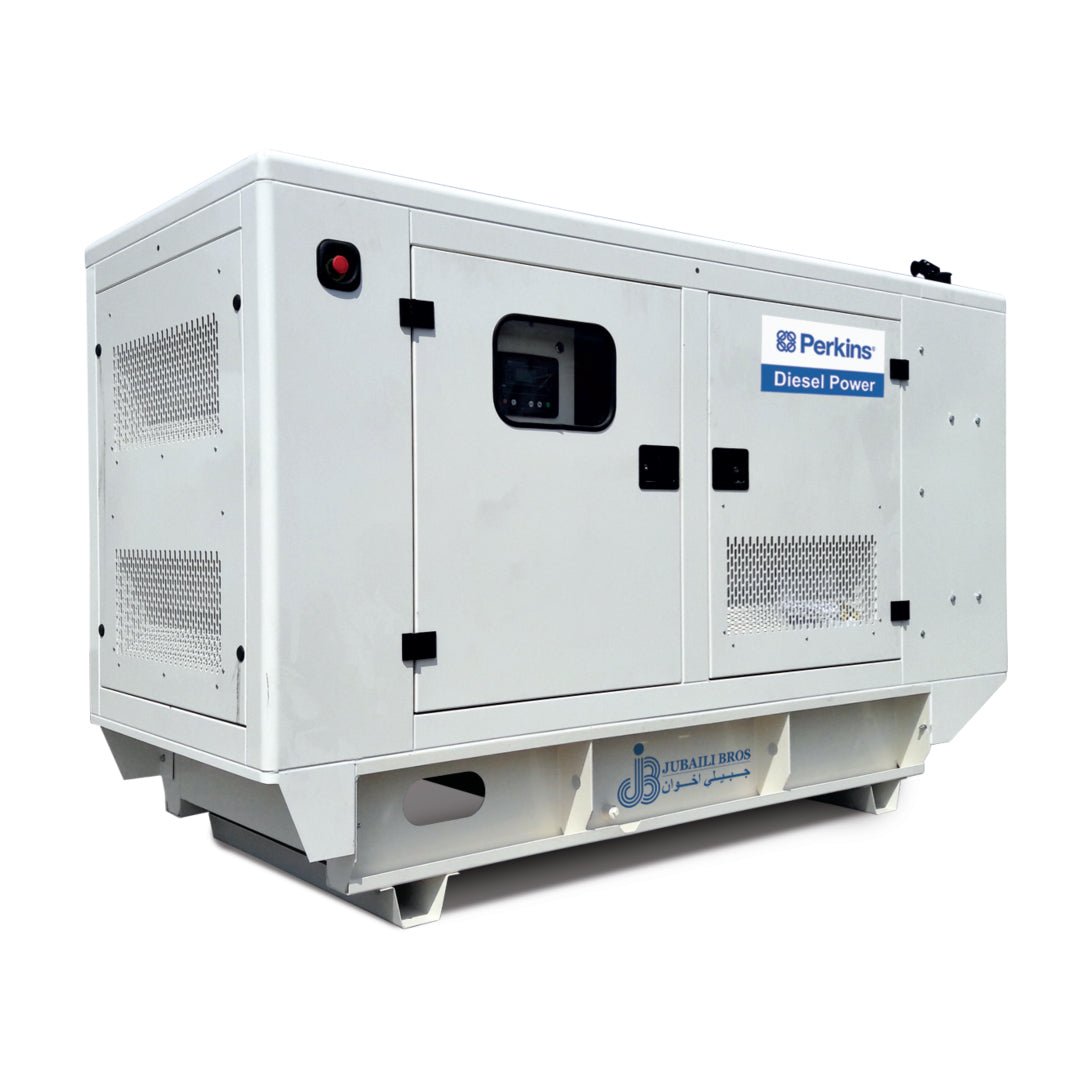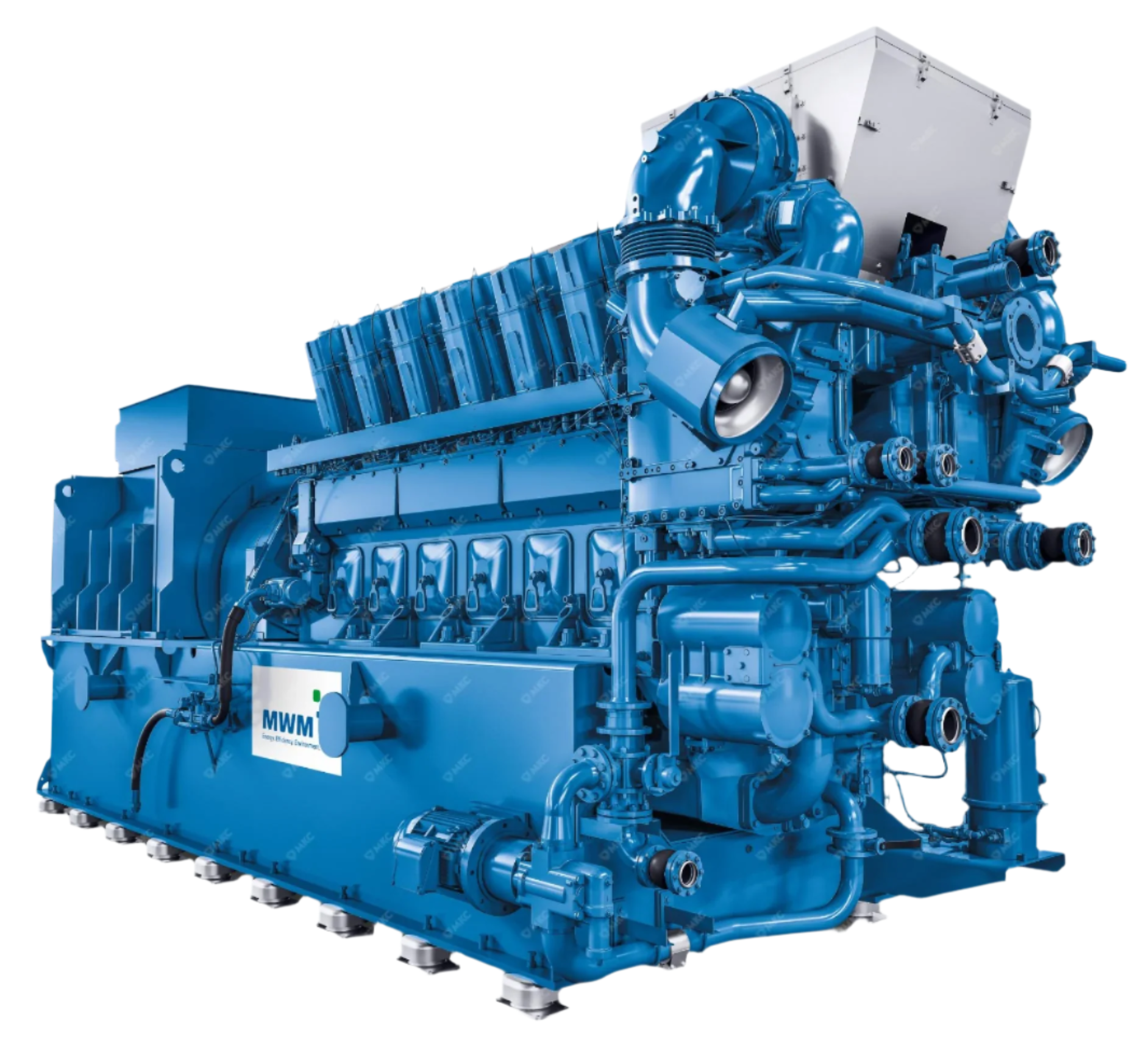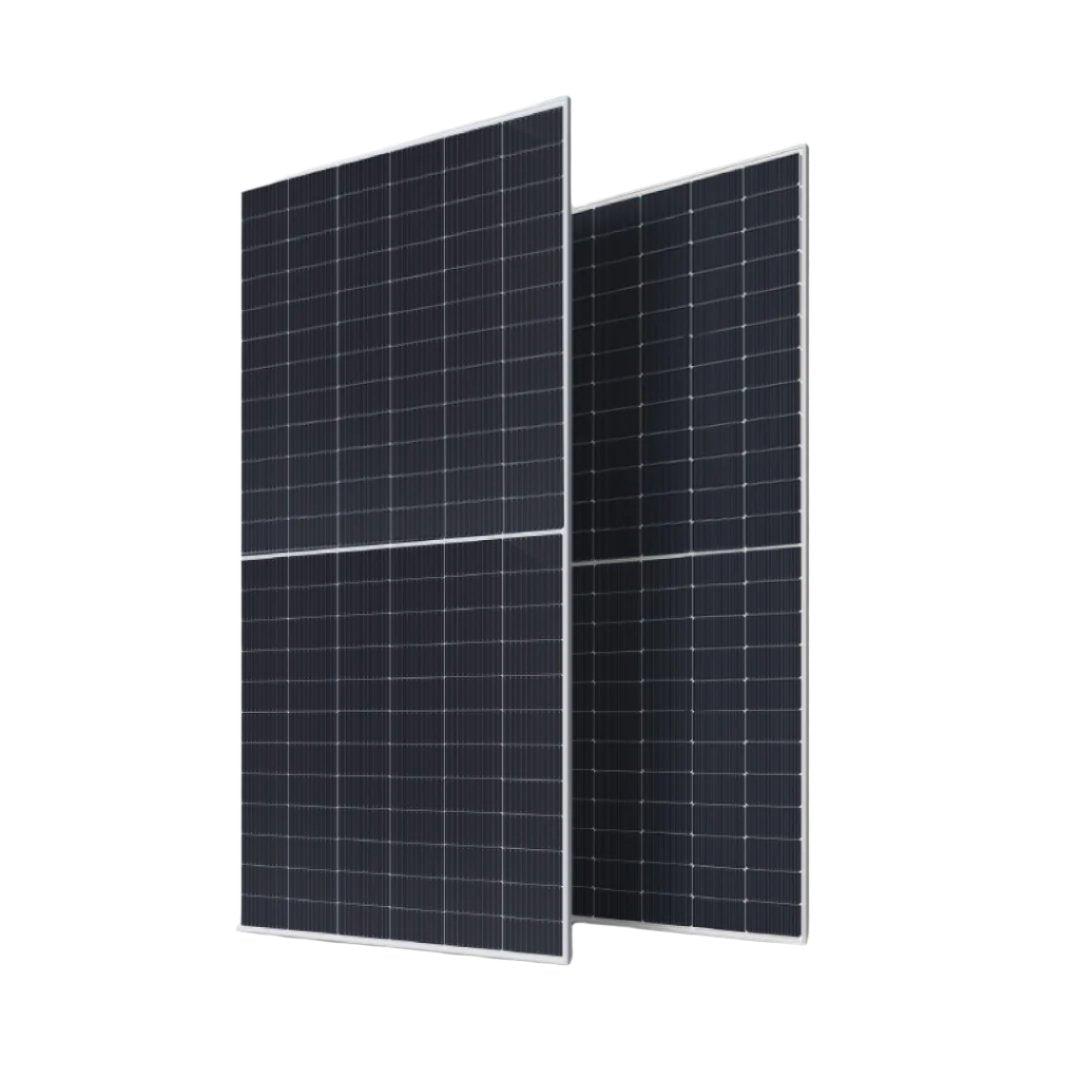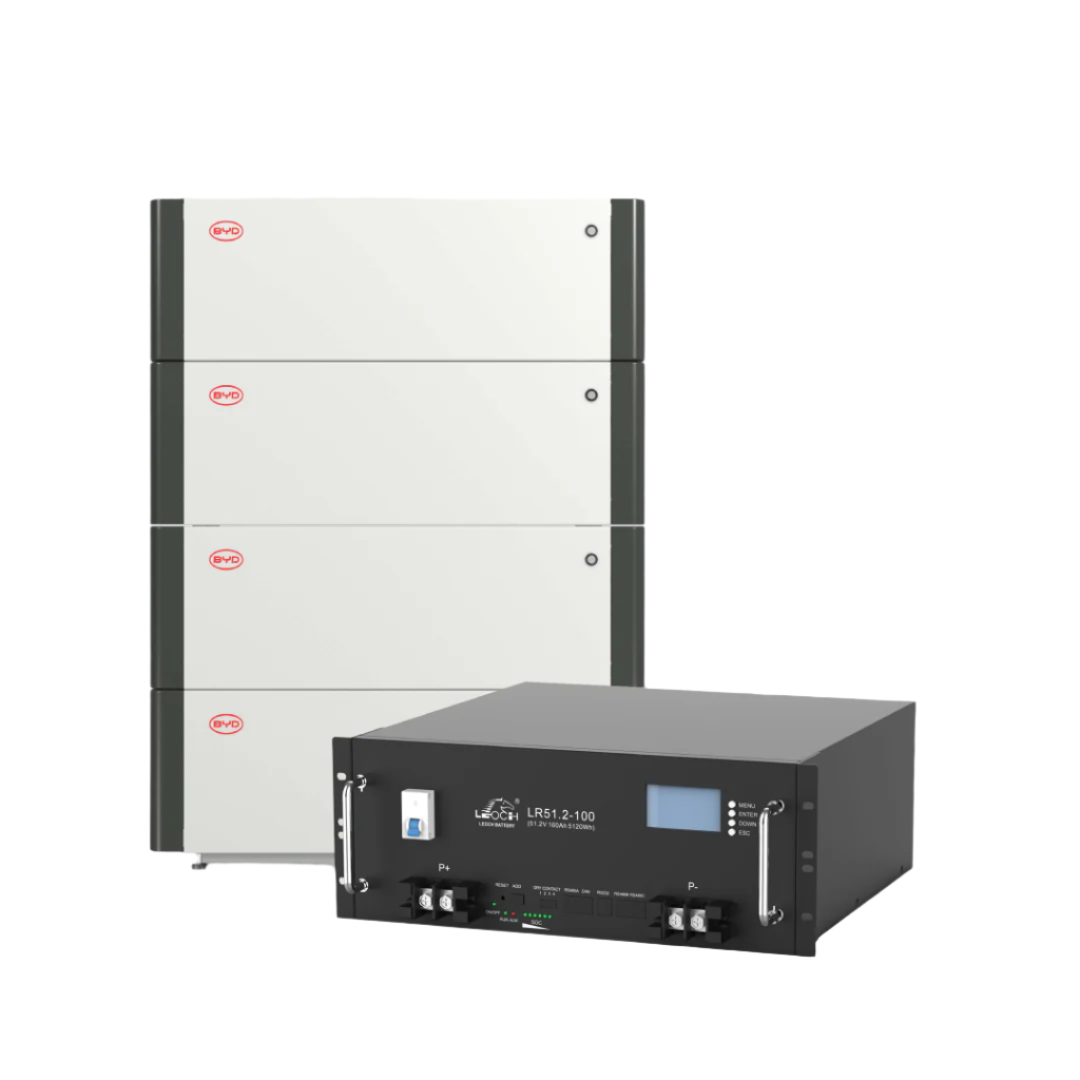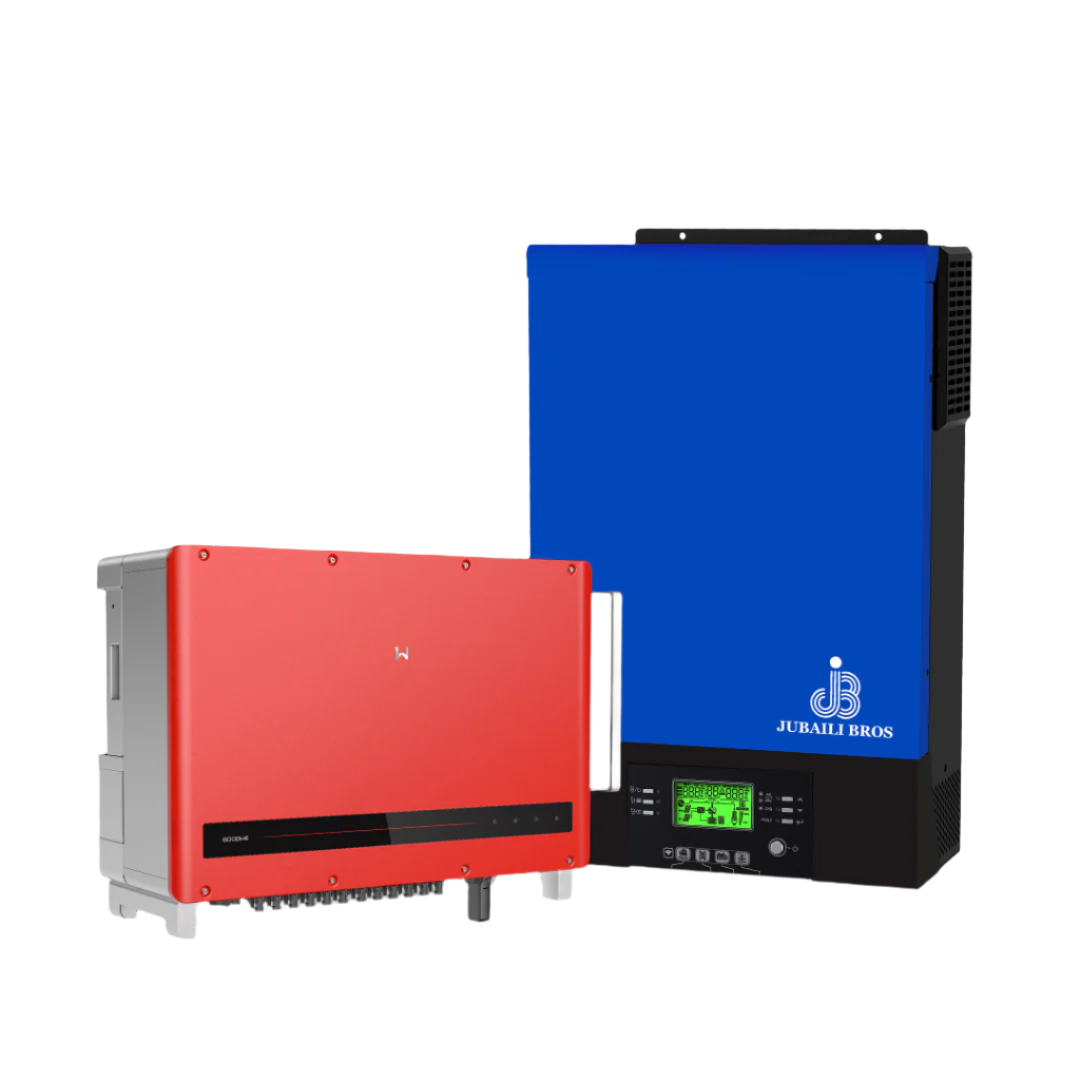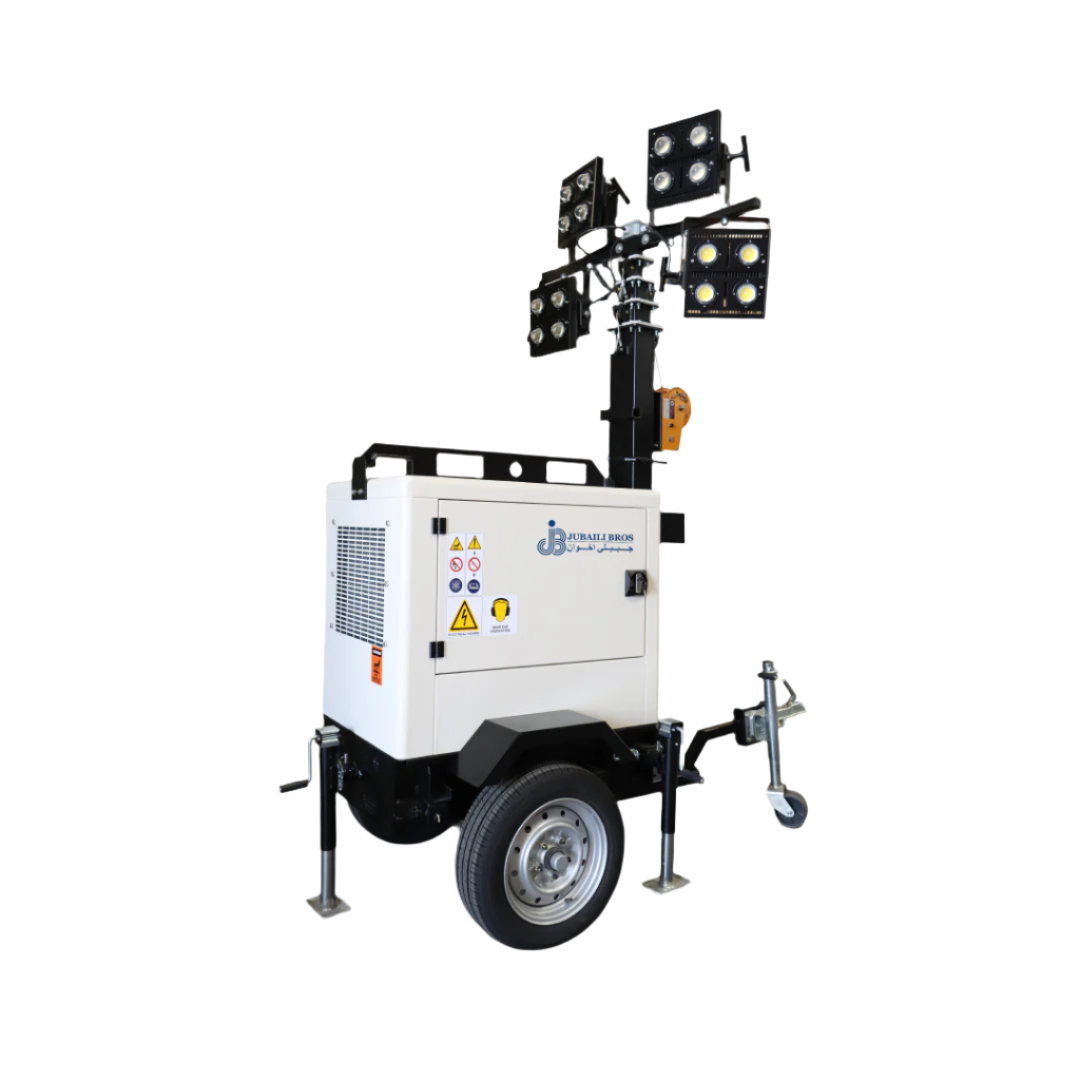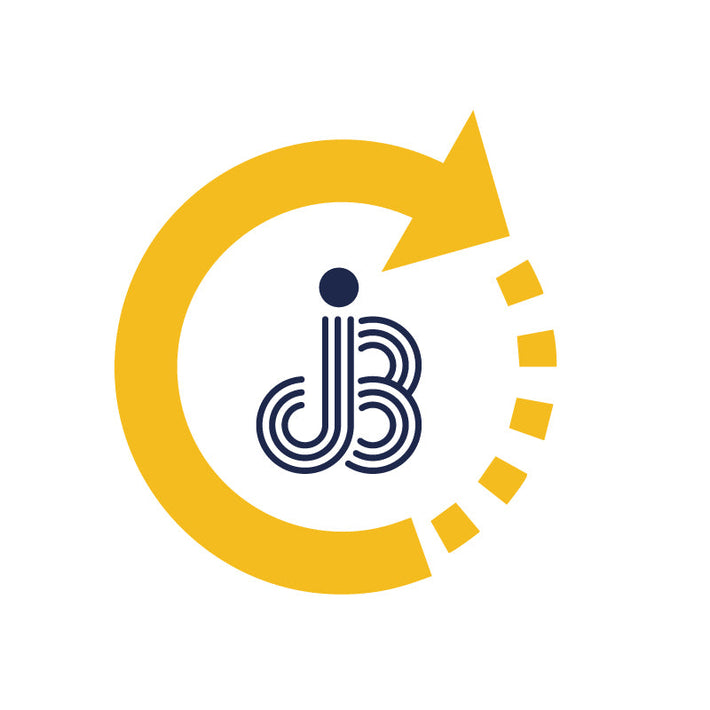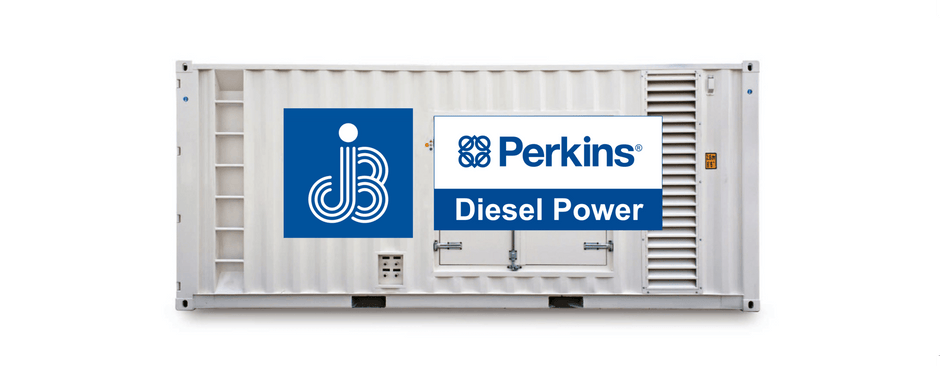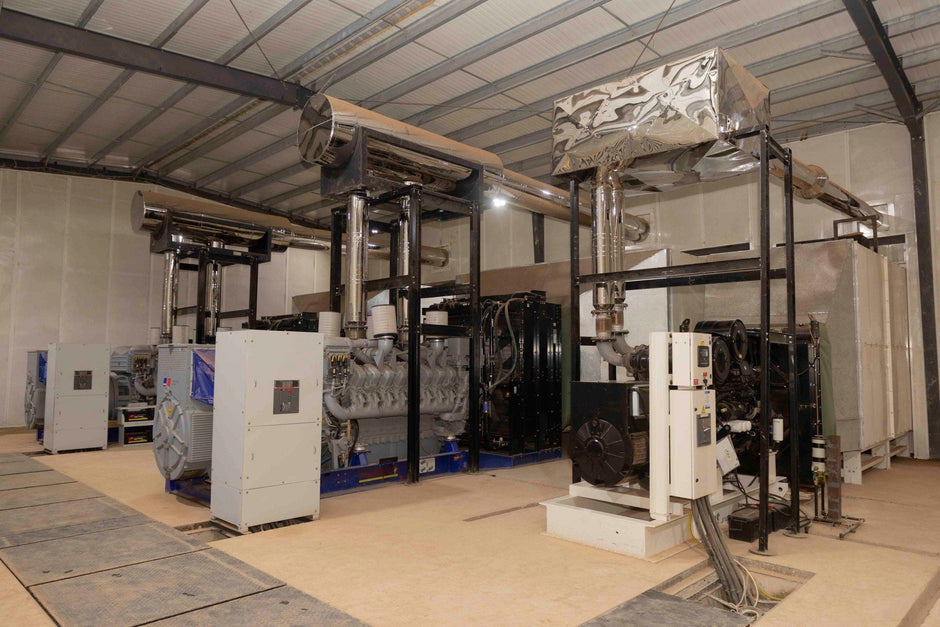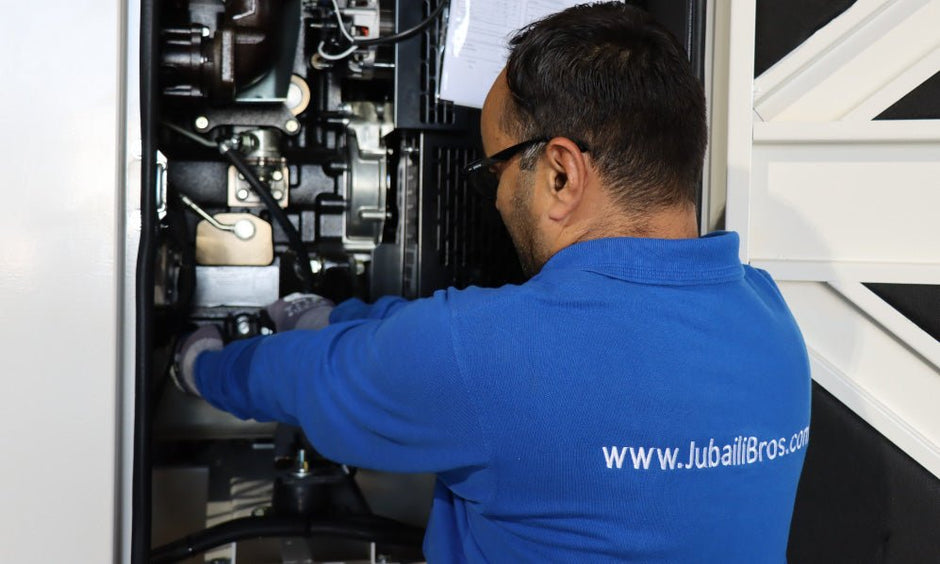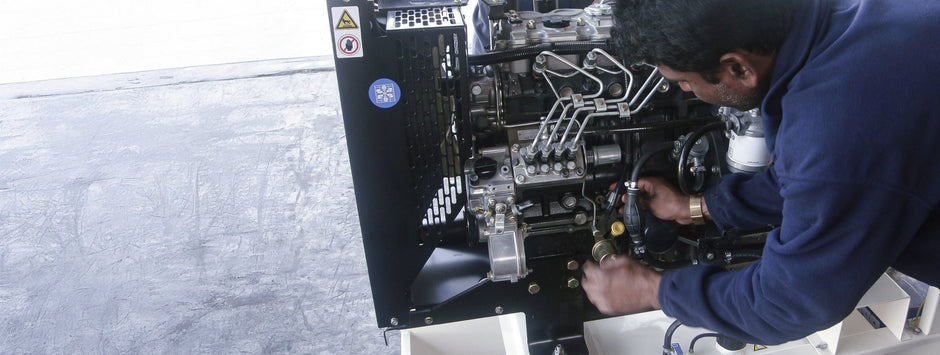For many projects, ensuring that a diesel generator meets noise limits is just as critical as meeting kVA ratings. Hospitals, data centres, hotels, and industrial facilities must comply with municipal ordinances, LEED™ credits, or workplace Health & Safety targets. Acoustic performance influences enclosure design, exhaust selection, ventilation layout, and site planning from the earliest design phase. This article breaks down acoustic concepts, compares enclosure classes, and presents practical design strategies to meet stringent sound-level targets.
Understanding Generator Noise Levels
A 500 kVA open-type generator produces approximately 100–105 dB(A) at 1 m—similar to a chainsaw. Because sound pressure decreases by 6 dB each time distance doubles (the inverse-square law), the same unit will still emit 78–83 dB(A) at 10 m—well above the 55 dB(A) night-time limit common in mixed-use areas. Jubaili Bros references these baseline figures during the design and tendering phase when advising consultants on acoustic treatment needs.
Key Acoustic Terminology
- dB(A): Decibels weighted for human hearing. A 10 dB increase is perceived as twice as loud.
- Sound Power (Lw): The total energy emitted by a source, regardless of distance.
- Sound Pressure (Lp): The level measured at a point, affected by distance and reflections.
- Insertion Loss: The reduction in sound level provided by a device such as a silencer or attenuator.
Enclosure Classes and Performance
| Enclosure Class | Typical Sound Level @7 m | Construction Details |
|---|---|---|
| Residential | 70–75 dB(A) | 1 mm mild steel, 50 mm mineral wool, standard muffler |
| Critical / Hospital | 65 dB(A) | 1.5 mm mild steel, 75 mm mineral wool, high-performance silencer |
| Super-Silent | ≤ 60 dB(A) | 2 mm steel, composite insulation with mass-loaded vinyl, labyrinth vents |
The Jubaili “JB‑AC‑65” standard canopy achieves 65 dB(A) at 7 m on reflective ground while maintaining IP23 protection and forklift compatibility.
Exhaust Silencer Selection
Exhaust systems dominate low-frequency noise between 31.5 Hz and 250 Hz. A hospital-grade reactive + absorptive silencer provides 25–35 dB(A) attenuation, compared to 15–20 dB(A) for residential silencers. Be sure to account for silencer back-pressure within the engine’s allowable limit, as detailed in the generator exhaust design guidelines.
Air Intake and Discharge Attenuation
Generators can require ventilation airflow of 5–15 m³/s. Acoustic splitters reduce noise but increase static pressure. Jubaili Bros recommends pressure drops below 150 Pa for set-mounted fans or 250 Pa for duty-standby motorised axial fans. Larger attenuators with deeper or longer splitters reduce both noise and pressure drop, improving airflow and efficiency.
Vibration Isolation
Structure-borne noise can bypass the enclosure via the base skid. Use spring isolators with 3–5 Hz natural frequency or rubber-in-shear mounts designed for ≥ 90 % isolation at 1 500 rpm. Flexible exhaust bellows and fuel hoses help prevent vibration from transferring into the building structure.
Labyrinth Air Paths
Breaking the line of sight between fan and louvre significantly improves attenuation. A basic Z-shaped duct with two bends and 50 mm mineral wool lining can add 8–10 dB(A) attenuation with minimal cost. Seal all doors with compression latches and bulb gaskets to ensure gas-tight integrity.
Example: Designing for 60 dB(A) at 7 m
Starting point: 1 000 kVA open-type generator ≈ 105 dB(A) at 1 m.
Apply distance loss to 7 m: 105 – 17 = 88 dB(A).
Target: 60 dB(A) → Required reduction: 28 dB(A).
- Hospital-grade silencer → approx. −30 dB(A) in exhaust band (−12 dB overall)
- Intake with labyrinth path and rock-wool splitters → −8 dB
- Discharge attenuator → −6 dB
- Enclosure panels (composite) → −4 dB
Total attenuation ≈ 30 dB – achieving the 60 dB(A) goal with margin.
Compliance Testing Procedure
- Place microphones at 7 m from the set, 1.5 m above ground, in six cardinal directions.
- Ensure background noise is at least 10 dB below measured level.
- Correct readings using ISO 3744 procedures; average results.
- Log load, ambient temperature, and generator speed during testing.
Maintenance Recommendations
- Inspect acoustic door seals quarterly; replace if compression set exceeds 25 %.
- Clean intake and discharge louvres annually; dust buildup restricts airflow and raises engine temperature.
- Check silencer back-pressure; an increase of 30 % may indicate internal corrosion or blockage.
Conclusion
Generator noise control involves much more than silencers. It requires an integrated approach involving ventilation, structure-borne vibration, enclosure materials, and careful site layout. By starting with the target noise limit and applying best practices in design, Jubaili Bros ensures generators meet both technical and regulatory requirements—without last-minute retrofits.
Need assistance with acoustic modelling or custom enclosure fabrication? Contact Jubaili Bros—our in-house acoustics team delivers engineered solutions for projects across the GCC and Africa.







